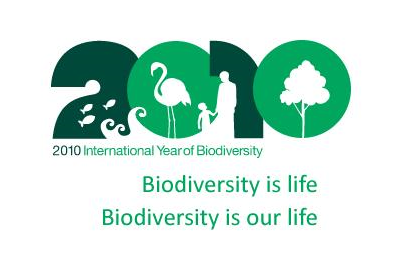 In biodiversity, also taking its cue from the report of the Wildlife Conservation Society, which puts the spotlight on mammals, amphibians, reptiles and birds considered "Critically Endangered" by IUCN, the International Union for Conservation of Nature, we wanted to draw a sad list of the species in the world that face extinction in just a few years because of deforestation and the resulting loss of habitat along with pollution, both industrial and agricultural.
In biodiversity, also taking its cue from the report of the Wildlife Conservation Society, which puts the spotlight on mammals, amphibians, reptiles and birds considered "Critically Endangered" by IUCN, the International Union for Conservation of Nature, we wanted to draw a sad list of the species in the world that face extinction in just a few years because of deforestation and the resulting loss of habitat along with pollution, both industrial and agricultural. Italy could well disappear to see 266 species considered by international experts on the brink of extinction or already extinct, such as Monaco or the vulture headed Duck, a beautiful duck-billed Teal. They are about to leave the ark Italian many marine species, including sharks, manta rays, common dolphins, monk seals, sea turtles, fin whales and dozens of birds that frequent our lakes and ponds, including ducks, waders, and then bats lizards, newts and snakes. Rivers at risk if you consider their people: dozens of species of fish considered almost extinct, including sturgeon, carp del Garda, bleak Apennines. Lots of plants in danger almost unknown but valuable because of many unique islands, a complaint to the depletion of fragile environments such as coastal or high-altitude meadows. Sicily and Sardinia in the head in the richest regions of biodiversity, already at risk and who are now called upon to help with specific safeguard policies. The complete Red List was published by IUCN, the International Union for Conservation of Nature, of which WWF is a member, and the framework, compared to previous years, whole is worse
1) Turtle Angonoka ( Astrochelys yniphora) .

2) Cuba crocodile (Crocodylus rhombifer ).

The population of this reptile is reduced to little more than 4,000 copies distributed in two small areas of the island. Scientists believe that most of these animals is, however, consists of Hybrid : intersections with the most common American crocodile (Crocodylus acutus). The crocodile cuba is strongly hunted for its meat .

Even this little frog, about 6 cm long, is facing extinction. There remain several hundred distributed between Panama and Costa Rica . In addition to habitat loss due to deforestation and pollution threaten the hapless amphibian was added chytrid (Batrachochytrium dendrobatidis), a fungus that is killing many amphibians in the world.

It is a bit 'the symbol of the campaign of Greenpeace's deforestation. The Sumatran orangutan is likely to become extinct even before scientists have had time to study it in depth. E ' an exclusive to the province of Aceh
in the south of' island of Sumatra. The population has dwindled to about 6,000 individuals . Their habitat has been replaced by the cultivation of oil palm and often the younger fish fall into the hands of traffickers of exotic species.
5) White-headed Langur (Trachypithecuspoliocephalus).

Il presbite dalla testa bianca è una scimmia originaria dell’isola di Cat Ba , nella Baia di Ha Long, in Vietnam. E’ di colore completamente nero , ma la sommità del capo, le guance e il collo sono di colore bianco. Hanno abitudini diurne e sono molto socievoli. Purtroppo ne restano solo 60 esemplari . Oltre alla perdita dell’habitat la popolazione è decimata dai cacciatori: dal corpo delle scimmie vengono estratte diverse sostanze utilizzate nella medicina tradizionale cinese.
6) Il pipistrello della Florida (Eumops floridanus).

This bat is the largest in Florida, and was considered extinct until 2002. Scientists there discovered a small colony in Fort Myers and today its population is composed of one hundred copies. Affected by pollution and degradation of the places where it lives and reproduces.
7) vaquita (Phocoena sinus).
The Gulf of California porpoise, or vaquita ("little cow" in English) is the most endangered cetacean in the world . And 'present only in northern Mexico where it is threatened by fishermen's nets, which often remains entangled. Today there are only 150 individuals in nature. To save the Mexican government has banned the use of certain types of fishing net, considered extremely dangerous to marine mammals.
8) of the Channel Islands Urocione ( Urocyon littoralis)

The urocione is a small fox native 6 of the 8 islands of the Channel Islands in California. And 'one of the most endangered species in the world with a population of only a thousand copies . The reasons for this decline are the diseases carried by dogs domestici e la predazione da parte dell’aquila reale.
9) Damalisco di Hunter (Beatragus hunteri)

10) Tortora of Grenada ( Leptotila Wells).

This rose-breasted bird is an animal most representative of the Caribbean island of Grenada. Its population today numbers just over 150 individuals that are shrinking more and more of their habitat and increase the number of predators such as cats, mongooses and rats. To protect the small colony of doves, the government launched a ten-year plan.
To see the animal species in danger of extinction throughout the world, I suggest you visit this blog .
If you liked the article, subscribe to the feed to stay updated on new blog content:

0 comments:
Post a Comment